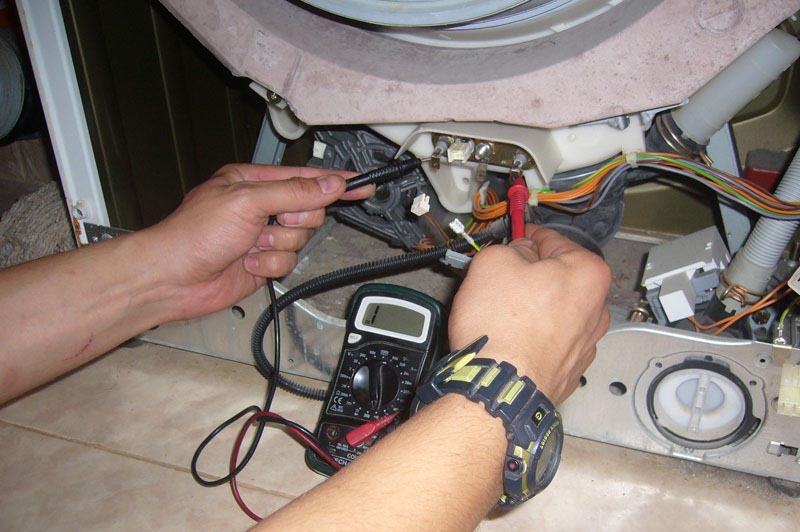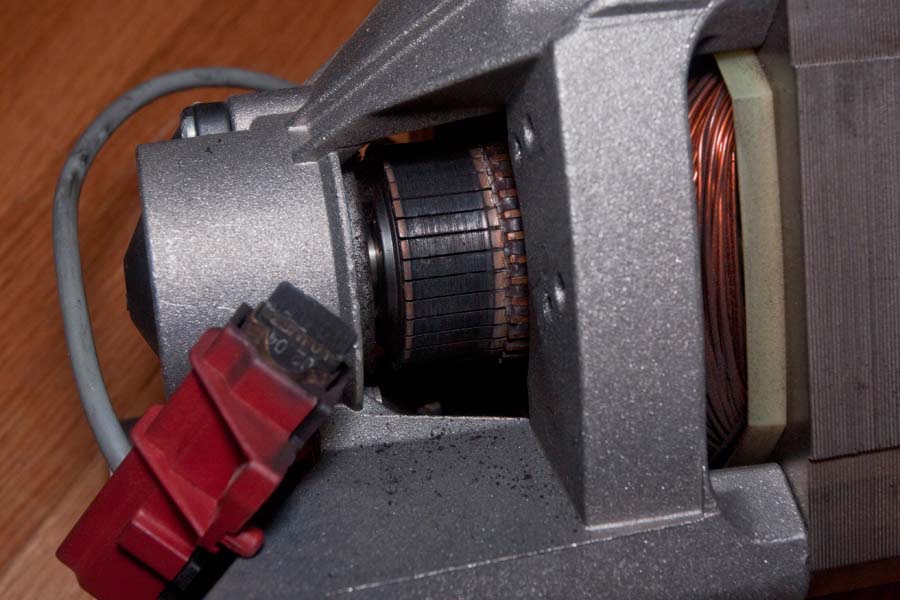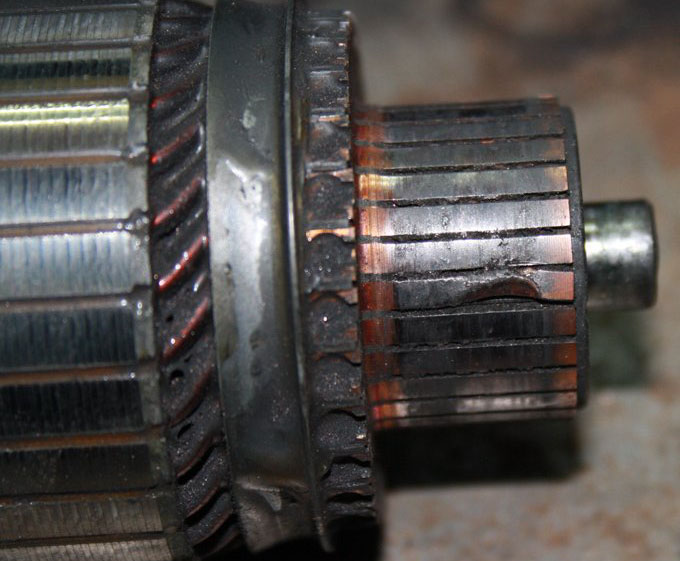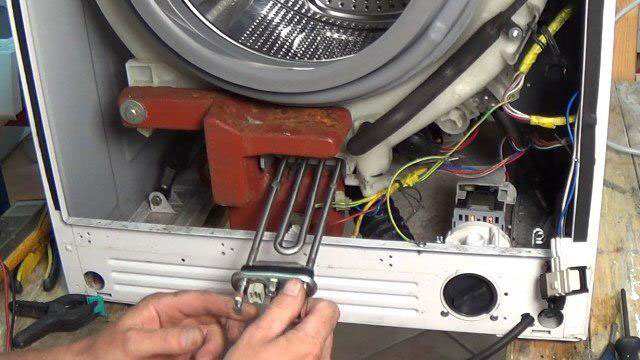 An automatic washing machine is a complex modern device with a large number of various components. Naturally, it can make noise during operation, but we are not talking about noise during spinning at all. But sometimes you can hear uncharacteristic sounds, crackling, and it also happens that the washing machine sparks.
An automatic washing machine is a complex modern device with a large number of various components. Naturally, it can make noise during operation, but we are not talking about noise during spinning at all. But sometimes you can hear uncharacteristic sounds, crackling, and it also happens that the washing machine sparks.
It is very important! If you find that your irreplaceable assistant has started sparking, do not waste time, immediately turn off the power to the household appliance. It is very dangerous to use equipment in this condition. This may cause a fire!
If the washing machine sparks, this is a 100% sign that it is broken. Don’t joke with this matter, don’t think that the problem will disappear by itself with subsequent washing. It doesn't happen that way.
We find out the essence of the problem and its location
A fault in the form of sparking may be associated with the breakdown and failure of various components. Most often, sparks can be seen during the final spin stage under the drum at the rear of the washing unit. Where the engine is. Sparks are accompanied by a crackling sound. Sometimes you can even see “fireworks.” If you sniff, you can smell the smell of burning and scorched plastic.

Sometimes the upper part of the case, in the area of the control panel, may also spark, but this happens much less frequently.Usually, after such a spark, the equipment does not turn on or turns on but does not respond to commands.
They ask us: “What to do: we called the service center, and the technicians laughed and said that everything was fine, could this be?”
Maybe. Sparking is normal in two cases. It so happens that on your good old washing machine the brushes in the motor, or the motor itself, were recently changed. The machine may also spark if you recently bought it. The new equipment is simply going into operation.
In the two cases described, the engine brushes that are grinding spark spark. When assembling or repairing the unit, they are installed correctly, but the commutator and brushes must still rub against each other. To make this happen as quickly as possible, try not to overload the drum at first, or even better, load it by a quarter or half, set the spin speed to medium, you don’t need to set it that much if your machine spins at 1600 rpm. And in general, such a spin speed is more of a marketing ploy. 1000 rpm is usually enough to spin clothes.
If sparks did not appear after replacing the brushes, you are faced with a malfunction. Let's look for the reason!
If you experience sparking, it's most likely the engine, but not always. Let's figure out why it sparks!
Stock up on screwdrivers, pliers and wrenches. We will need these tools in order to gain access to the internal components of the unit.
Remove the back cover and take a close look at the motor, control board and wires that go in different directions. After all, sometimes there is a short circuit to the housing or damage to the wiring insulation. If the source of the sparking cannot be immediately detected, start the wash and carefully inspect the components.The following items may spark during washing:
- heating element,
- control module,
- brushes sparkle
- There was a breakdown of the lamellas in the motor manifold.
Washing machine motor sparks
If the washer sparks at the bottom, most likely the problem is in the motor that drives the drum. There are two types of motors: inverter and commutator. An inverter motor is a modern option, while washing mashines from previous years have motors with brushes. Brushes wear out over time. Don't be upset. This problem happens sooner or later. Earlier - if you like to wash often and at maximum spin speed, later - if you take care of your equipment and follow all the manufacturers' recommendations regarding operation. The average service life of brushes is up to 7 years.

Why are brushes needed? These elements transmit an electrical impulse to a rotating commutator. Brushes can be carbon or graphite. High drum rotation speed leads to brush wear. Because of this, contact with the collector lamellas deteriorates, sparks appear, and an unpleasant odor appears. The more wear, the more these elements begin to spark.
Solving the problem is very simple. To do this, it is enough to replace the brushes. After this, the motor can continue to operate.
How to replace brushes?
- Unscrew the back cover.
- Remove the drive belt from the pulley.
- Disconnect the power terminals.
- Unscrew the engine mounts.
- Carefully pull out the engine. At this stage, we may be hindered by the washing machine tank, to which the motor is attached. Be patient, you need to be quick-witted, and the engine will be solemnly removed.
After the engine is removed from the washer, the problem can be solved in two ways: with disassembling the motor, without disassembling the motor.
How to replace brushes without disassembling the engine?
Old motors are designed so that the brushes and mounts are located inside the motor. In this case, the housing will have to be unscrewed, the brushes replaced, and then reassembled in the reverse order.
Don't forget that the assembly must be done correctly. To do this, mark with a marker, put all the bolts and fasteners in one place, you can take a photo of the arrangement of the elements before, so as not to rack your brains about how to assemble it correctly and how it was. Everyone has a smartphone with a camera, so this method is the most accessible. If you don't have a camera at hand, you can make a sketch using a piece of paper and a pencil.
With new motors, you don't have to take anything apart to replace the brushes. The brush holder is also visible from the outside. In this case, the brushes are simply unscrewed with a screwdriver and the fasteners are pryed off using a flat screwdriver.
The engine sparks due to broken manifold lamellas
If the machine sparks at the bottom, breakdown of the engine lamellas is another possible reason. Additionally, you can hear a strong crackling sound and extraneous sound. The noise intensifies during the spin phase and becomes simply unbearable when the tank is heavily loaded and washing at maximum speed.

Lamels are a malfunction also related to the engine. This part is the contact surface of the commutator, which rubs against the brushes. When the drum rotates, the lamellas heat up and lose their smoothness over time. If the machine is not allowed to rest, you run several washing cycles in a row, or overload the drum, the lamellas will overheat greatly and the process of their destruction begins.
Some plates may even wear off, while others may develop carbon deposits.Because of this, poor contact with the brushes occurs and, as in the previous case, sparks, crackling, and knocking of the brushes on the contact surfaces appear.
This failure can be diagnosed by turning the drive shaft manually. If the lamellas are heavily worn, you will hear clicks and sounds that a working motor never makes.
If the lamellas are slightly damaged, it is enough to clean off the carbon deposits and polish them with felt. This can restore the smoothness and uniformity of the contact pad.
Severely worn lamellas cannot be restored. In this case, you will have to change the engine, since manufacturers do not produce the manifold and other engine parts separately.
Sparking heating element
So, if the washing machine sparks while the engine is running, then the problem is precisely in this unit: in the brushes or in the lamellas. But sometimes the engine has nothing to do with it. For example, a tubular heater in a washing machine can easily spark. In some washing machine models, such sparks can be seen even through the glass.

If you see that the heating element has sparked, try to turn off the power to the equipment as quickly as possible and do not touch the body with your hands so as not to receive an electric shock.
After this, remove the back cover of the washer. Armed with a multimeter, find the contacts of the heating element. There are only 3 of them. The one in the middle is grounding. Set the meter to buzzer mode. Next, you need to attach one multimeter probe to the extreme contact, and the other to the middle one (or to the body). In normal condition, the device will not beep; if you hear a squeak, it means a breakdown has occurred.
A broken heating element must be replaced. This item cannot be repaired.
Due to voltage surges, the control module can also spark. In this case, you will see the sparking from above, not from below.You will be notified by an error code that the control unit has burned out. Typically, after such a malfunction, the module will need to be replaced.
So, now you know why sparks appear in the washing machine. We recommend following the operating rules, not overloading the drum, not washing at maximum speed, and also using a surge protector and an RCD.









